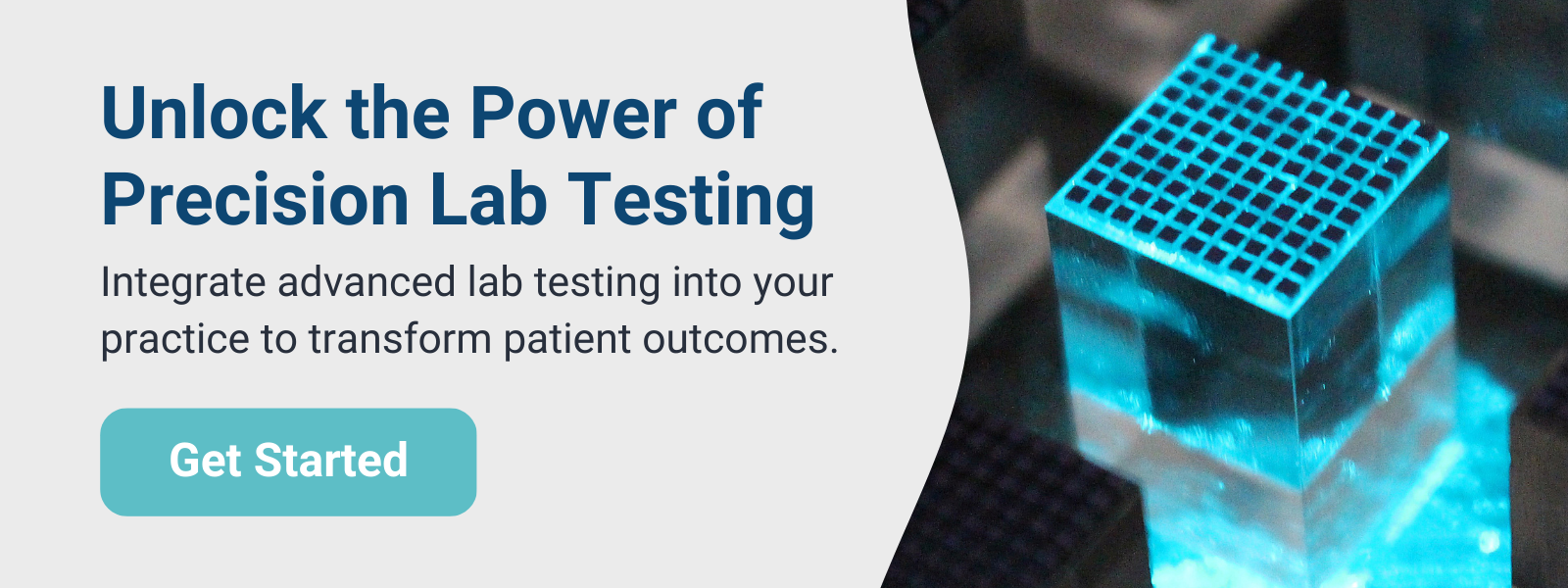B-Cell Epitopes as Novel Biomarkers for the Detection of Celiac Disease
For approximately two million Americans, eating a simple slice of bread can lead to serious symptoms like abdominal pain, bloating, diarrhea, and fatigue.
Celiac disease (CD) is an autoimmune condition where the act of eating gluten—a protein found in wheat, barley, and rye—triggers a harmful immune response in genetically susceptible individuals.
CD symptoms span a broad spectrum, causing everything from severe gastrointestinal distress to debilitating systemic issues like anemia and fatigue.
Traditionally, diagnosing this condition relied on detecting specific antibodies, such as anti-tissue transglutaminase (tTg) and endomysial antibodies (EMA), followed by an intestinal biopsy to confirm the diagnosis.1
Despite their effectiveness, these methods have several drawbacks, including the potential for false negatives and the invasive nature of biopsies, which many patients find daunting.
This article explores research regarding an innovative, highly sensitive microarray method for detecting markers of celiac disease.
Table of Contents
B-Cell Epitopes: A New Way to Diagnose Celiac Disease
B-cell epitopes represent a new biomarker that could provide a highly accurate and non-invasive way to diagnose CD.
Epitopes are specific sites on an antigen that antibodies, like B-cells, can recognize and attach themselves to.
These epitopes could provide an effective way of diagnosing celiac, but detecting them has proven challenging.
Detecting B-Cell Epitopes: Research Study Breakdown

“Determination of B-Cell Epitopes in Patients with Celiac Disease: Peptide Microarrays” is a 2016 study published in PLOS ONE.
The study aimed to identify B-cell epitopes that can enhance the diagnostic process for celiac disease.
Our research team collected blood samples from several groups for this study. They first collected samples from a previously studied group, which included 48 people with confirmed celiac disease and 50 healthy individuals.
Next, samples were taken from 42 confirmed CD cases and 29 healthy individuals at ARUP Laboratories.
Finally, samples came from a group purchased commercially, which included 12 people with rheumatoid arthritis and 7 with systemic lupus erythematosus.
Additionally, blood samples from another large group of 306 people with CD and 1,590 healthy controls, gathered earlier in a community study, were used to test the effectiveness of the newly discovered peptide markers.
Utilizing a state-of-the-art silicon-based peptide microarray, the research team aimed to uncover and validate discontinuous B-cell epitopes that are specifically reactive in CD patients.
Discontinuous epitopes refer to epitopes containing amino acids that aren’t close together on a protein's linear sequence but come together in a 3D structure when the protein naturally folds.
Our team sought these biomarkers to provide a more accurate, non-invasive diagnostic alternative that could potentially replace or supplement existing antibody tests and biopsies.
Advanced Testing Technology: Microarray Platform
The cornerstone of this research was an innovative microarray platform equipped with a multi-pillar chip designed to synthesize and probe thousands of peptide sequences simultaneously.
This high-throughput system uses a silicon base, allowing for precise and scalable peptide synthesis and assessment.
To organize the data, our research team used advanced computational algorithms to design and select peptide sequences.
These sequences were based on native and deamidated forms of gliadin, the gluten component known to trigger immune responses in CD.
Deamidation, a process where certain amino acids in the peptide chain are chemically altered, enhances the immune response to gliadin, making it a crucial target for CD diagnostics.
The peptides were synthesized directly on the silicon chips using a photolithographic method that allows for the precise placement and construction of overlapping 12-mer peptide sequences.
This approach increased the array's peptide density and its capability to screen a vast number of potential epitopes efficiently.
The Results
Our research team identified two distinct sets of B-cell epitopes that demonstrated remarkable diagnostic sensitivity (99%) and specificity (100%).
These epitopes are comprised of non-continuous strands of gliadin peptides, which are the binding sites for antibodies and were previously unidentified. These findings now provide a substantial improvement in distinguishing between individuals with celiac disease (CD) and those without the condition.
B-Cell Epitopes: Advantages Over Traditional Methods

The newly discovered biomarkers offer several advantages over traditional diagnostic methods:
- Non-Invasiveness: Unlike biopsies, the peptide microarray method does not require patient tissue samples, eliminating the risks and discomfort associated with invasive procedures.
- Higher Accuracy: The epitopes identified have shown higher sensitivity and specificity than the conventional serological tests, reducing the likelihood of false negatives and false positives.
- Speed and Efficiency: This method allows for rapid screening of multiple samples, which is beneficial in clinical settings where time and accuracy matter.
Clinical Implications
These findings represent a significant breakthrough in celiac disease (CD) research, offering new avenues for non-invasive, accurate diagnosis.
By pinpointing specific discontinuous B-cell epitopes associated with CD, the study provides clinicians with powerful new tools for detecting the disease earlier and more reliably than traditional methods.
For patients, this means a diagnostic process that is quicker, less invasive, and potentially less costly, as it reduces the need for multiple tests and follow-up procedures.
Further, the enhanced specificity of these biomarkers minimizes the risk of misdiagnosis, ensuring that patients receive appropriate and timely treatment.
This improved diagnostic accuracy is crucial in preventing the long-term complications associated with untreated CD, such as nutritional deficiencies, increased risk of other autoimmune diseases, and certain cancers.
Ultimately, these advancements could significantly enhance the quality of life for individuals with CD by streamlining their path to a precise diagnosis and effective management plan.
Finally, this silicon-based peptide microarray has demonstrated its efficacy in identifying novel, highly accurate biomarkers for celiac disease and has set a new standard in the diagnostic processes for autoimmune disorders in general.
Advanced Precision Testing for Celiac Disease
You can utilize Vibrant's advanced precision testing to detect celiac disease reliably and effectively in a non-invasive way.
The Wheat Zoomer

The Wheat Zoomer panel assesses sensitivity to wheat, celiac disease, other wheat-related autoimmune conditions, and intestinal barrier stability.
This panel detects sensitivity to wheat with greater than 99% sensitivity and 100% specificity.
The Wheat Zoomer assesses celiac disease by detecting deamidated gliadin peptides (containing B-cell epitopes) and the tissue transglutaminase/ deamidated gliadin peptide complex (tTG/DGP Complex) for early detection of celiac.
Using this peptide complex, the Wheat Zoomer can detect if an individual is at risk of celiac disease up to four years prior to symptoms developing.
The Wheat Zoomer provides highly sensitive and early detection of celiac, allowing for early interventions and targeted treatment plans.
The Celiac Panel

The Celiac Panel detects IgA and IgG antibodies and reactivity to gliadin, the alcohol-soluble portion of gluten.
In addition to testing for reactivity to gliadin, the celiac panel provides genetic insights into the risk of celiac development by detecting relevant genes.
The celiac panel is a powerful tool to measure a patient’s risk of developing celiac disease and detect those with active celiac.
Advanced Diagnostics & Preventative Medicine
The Vibrant research team’s identification of novel B-cell epitopes represents a significant advancement in celiac disease diagnostics and offers broader implications for preventative medicine and managing chronic illness.
By enhancing diagnostic accuracy and providing a non-invasive alternative to traditional methods, this technology allows for early detection of celiac disease, preventing severe complications and improving patient longevity.
Further, these innovative approaches can be adapted to other autoimmune disorders, promoting a shift towards personalized medicine that not only treats but anticipates health issues.
As such, this research promises a better quality of life for individuals with celiac disease and sets the stage for future advancements that could transform the management and prevention of chronic illnesses globally.
References:
-
Choung, R. S., Marietta, E. V., Van Dyke, C. T., Brantner, T. L., Rajasekaran, J., Pasricha, P. J., Wang, T., Bei, K., Krishna, K., Krishnamurthy, H. K., Snyder, M. R., Jayaraman, V., & Murray, J. A. (2016). Determination of B-cell epitopes in patients with celiac disease: Peptide microarrays. PLOS ONE, 11(1). https://doi.org/10.1371/journal.pone.0147777
 By
By

%20(1)-1.png?width=800&height=406&name=Tickborne%20Diseases%20%20Advanced%20Detection%20Technology%20(800%20x%201200%20px)%20(1)-1.png)



